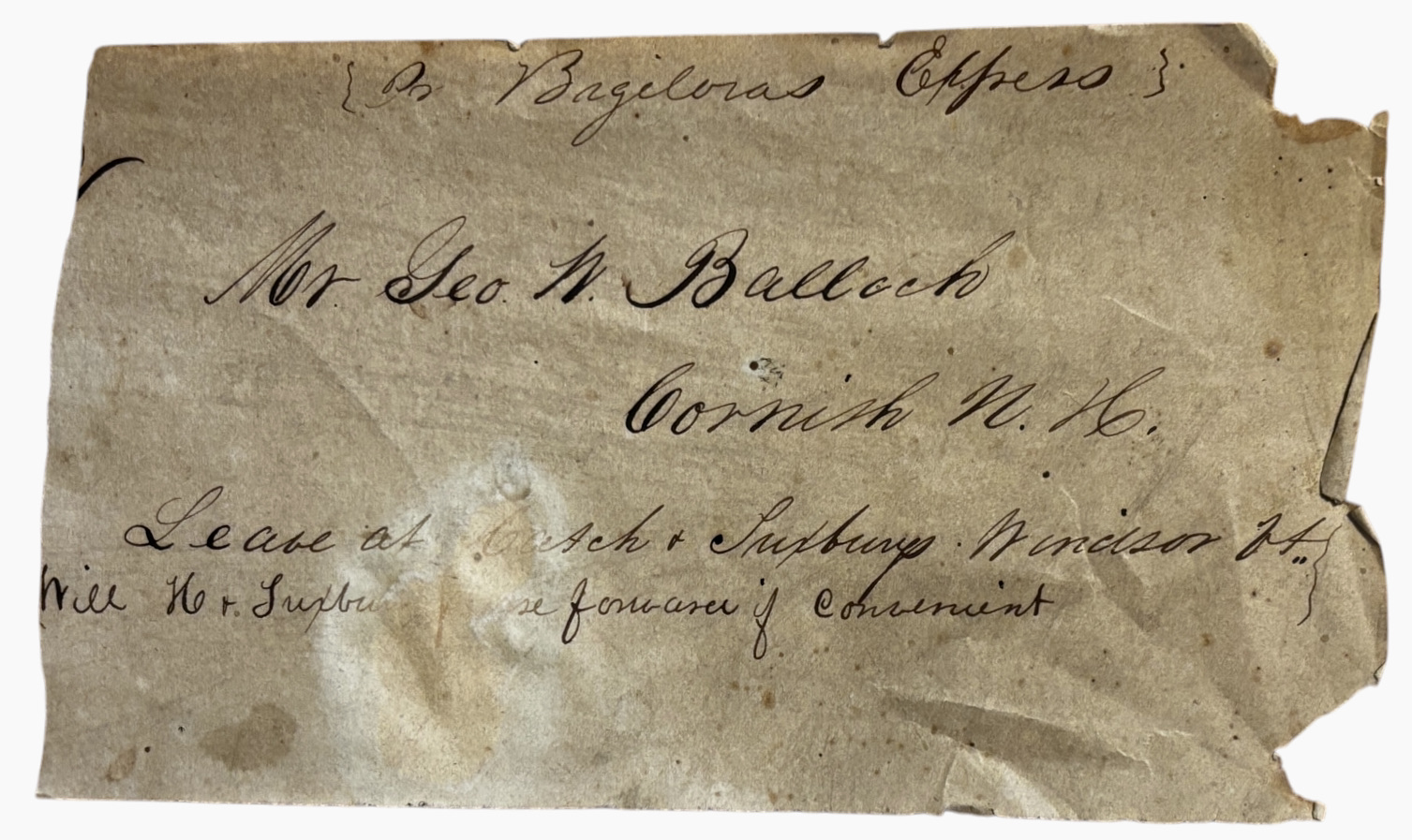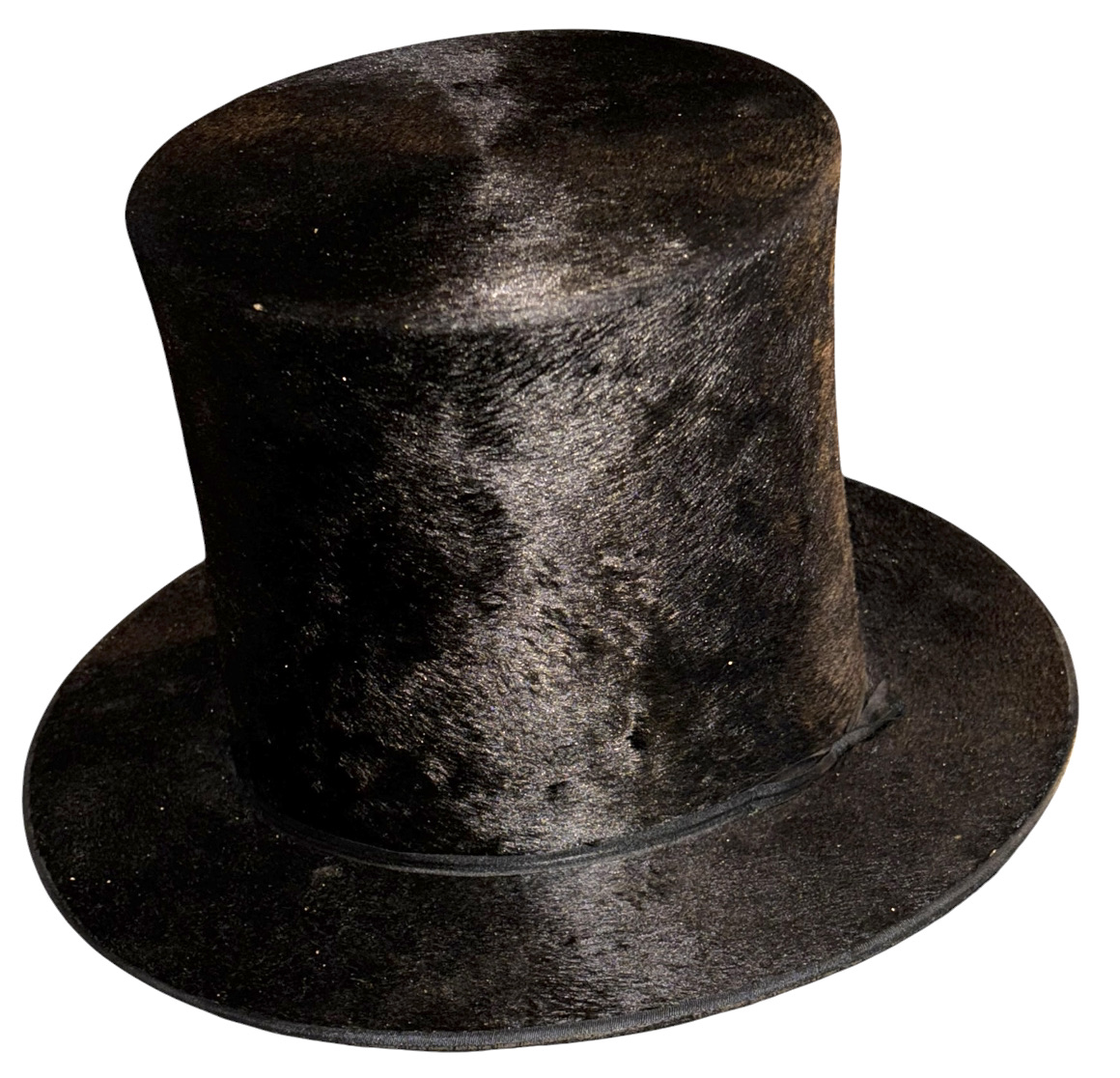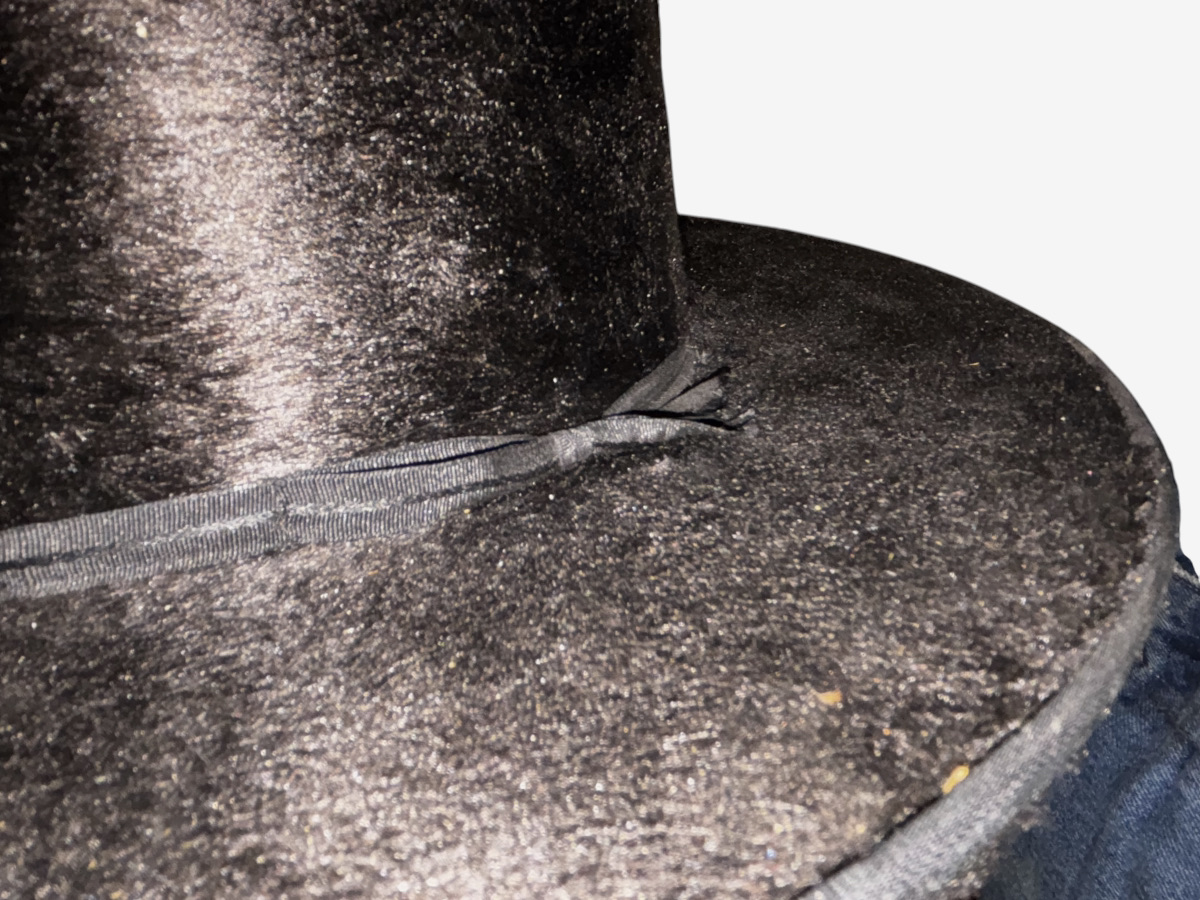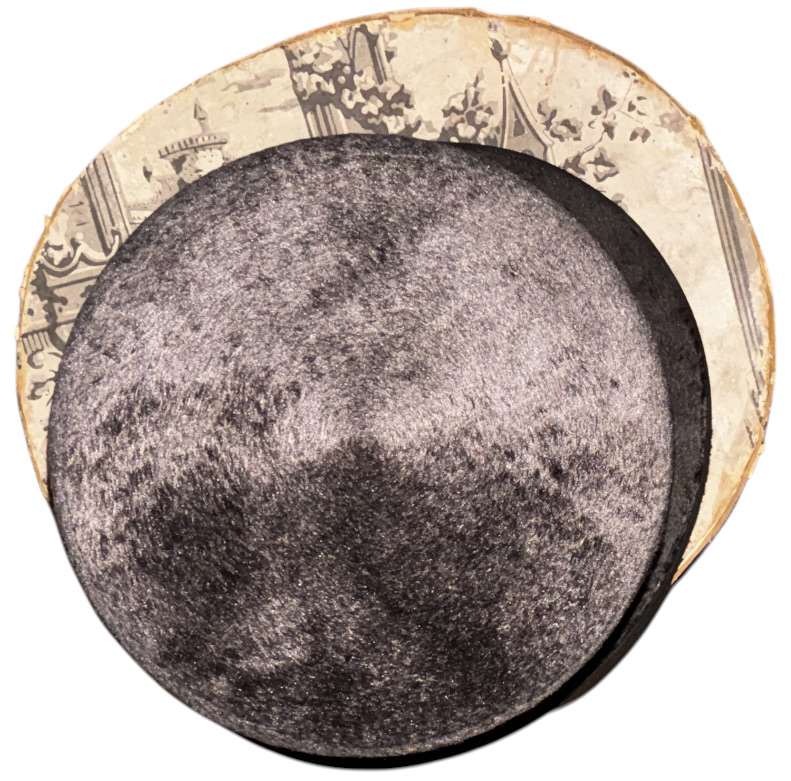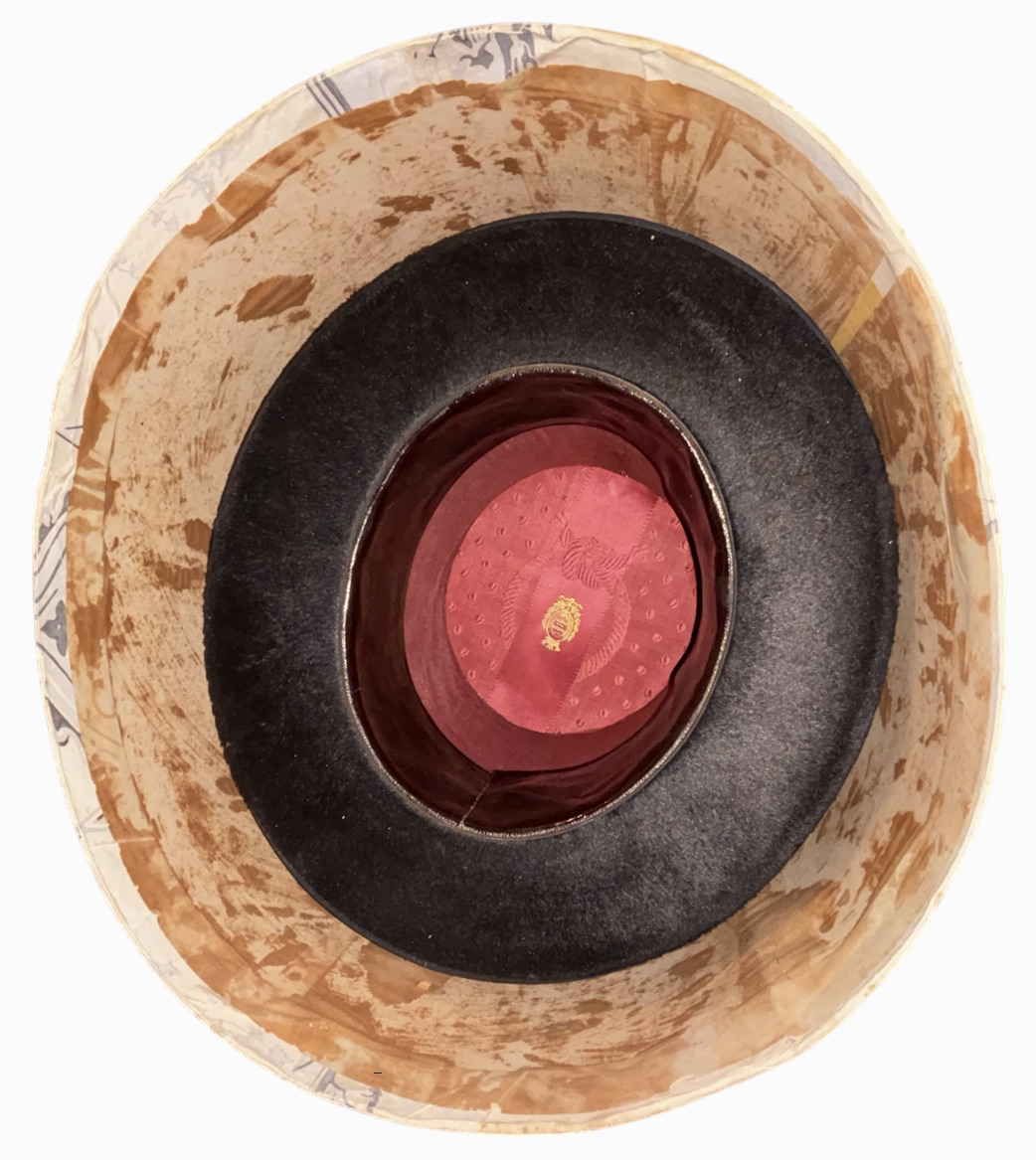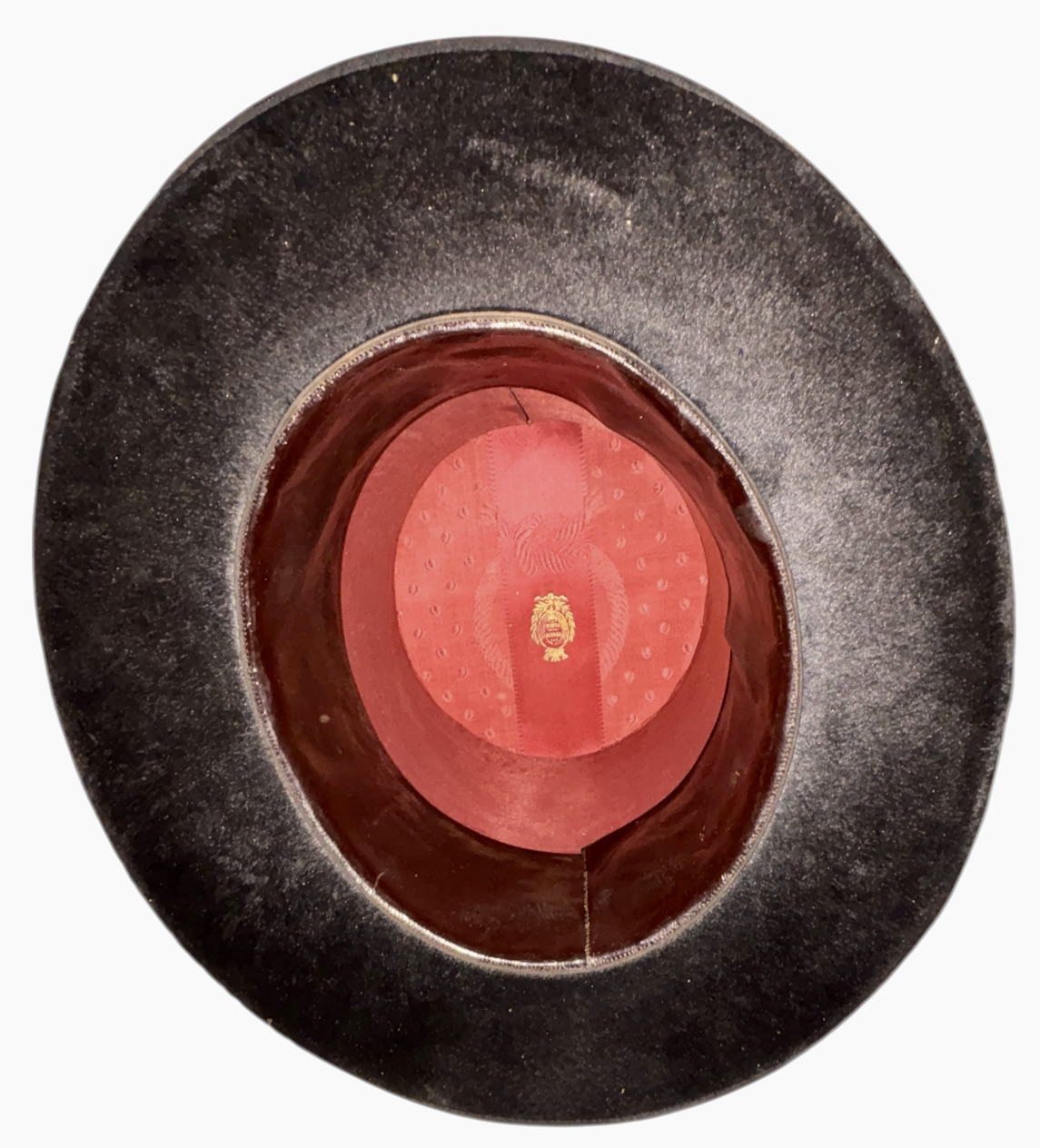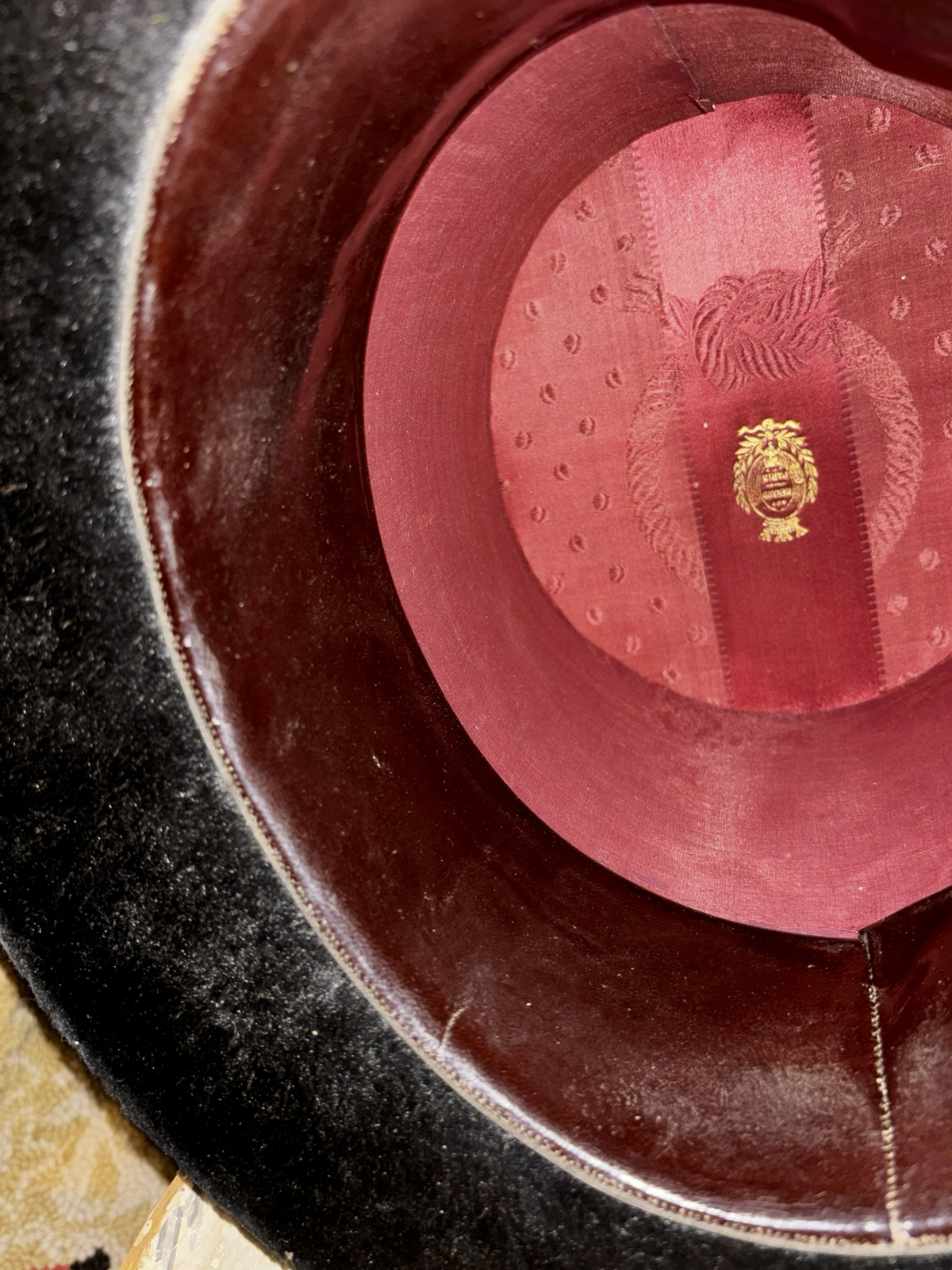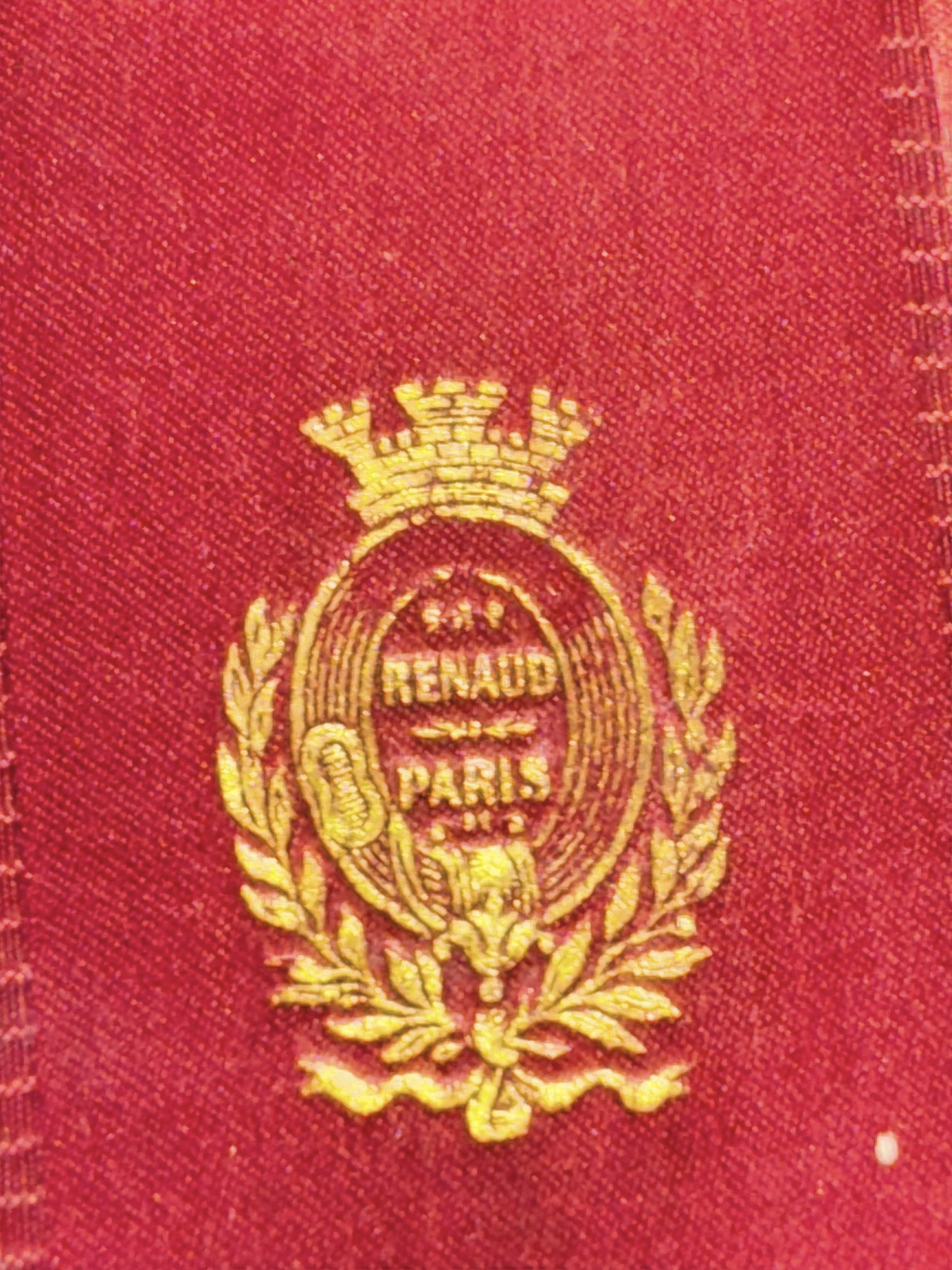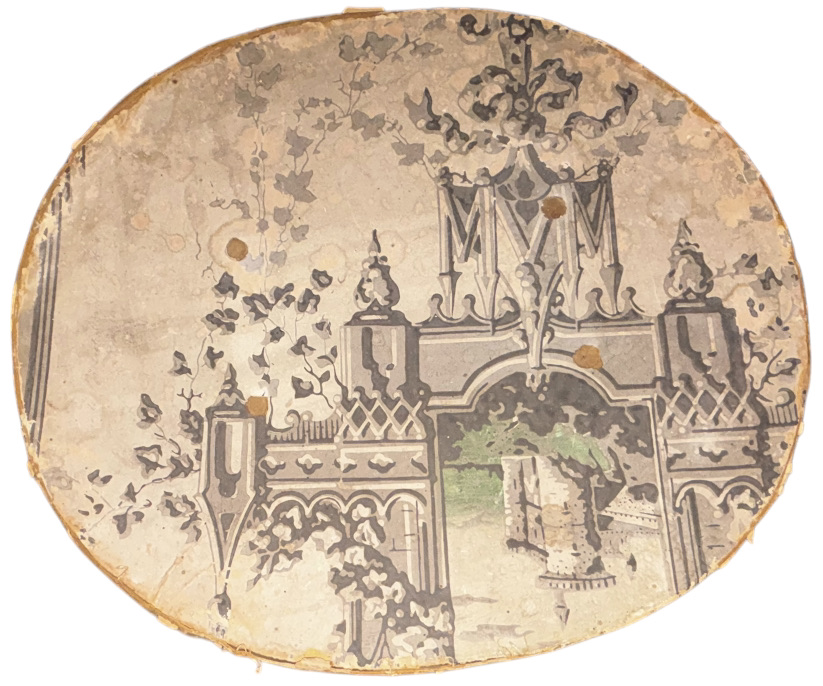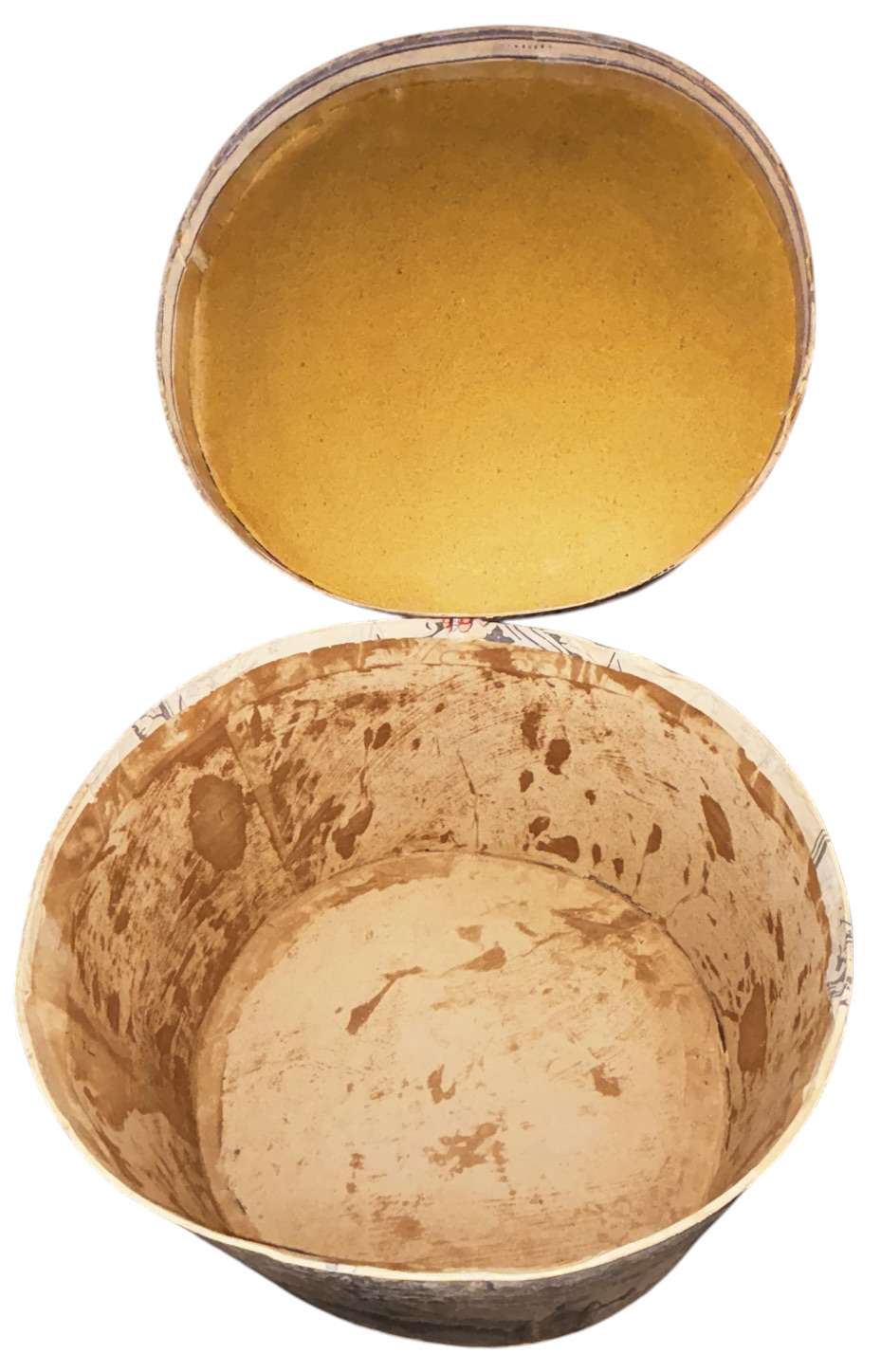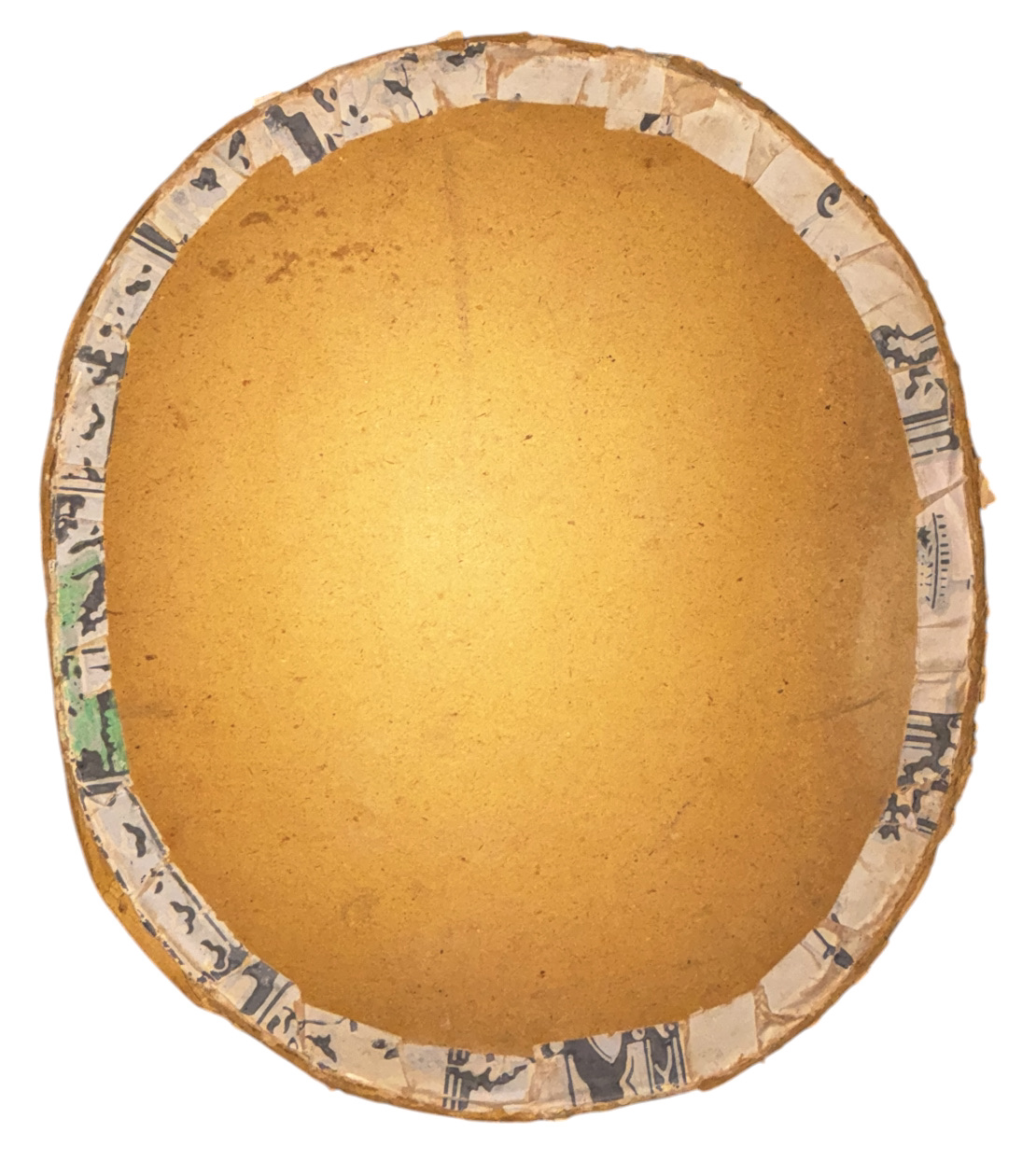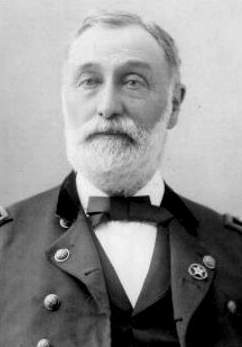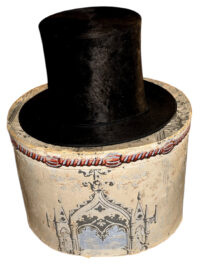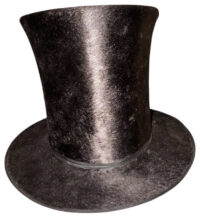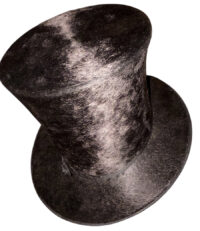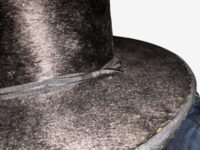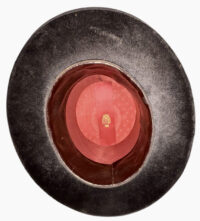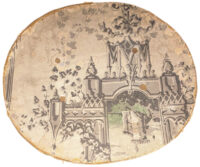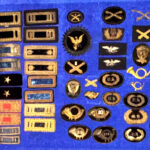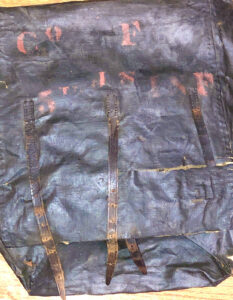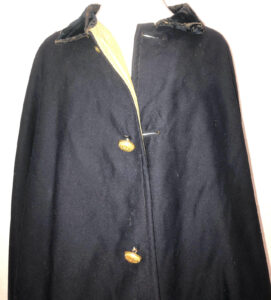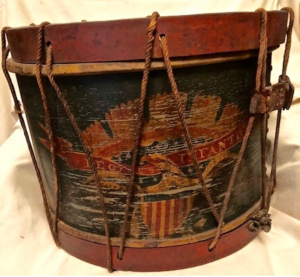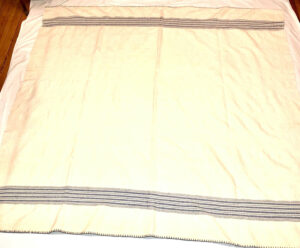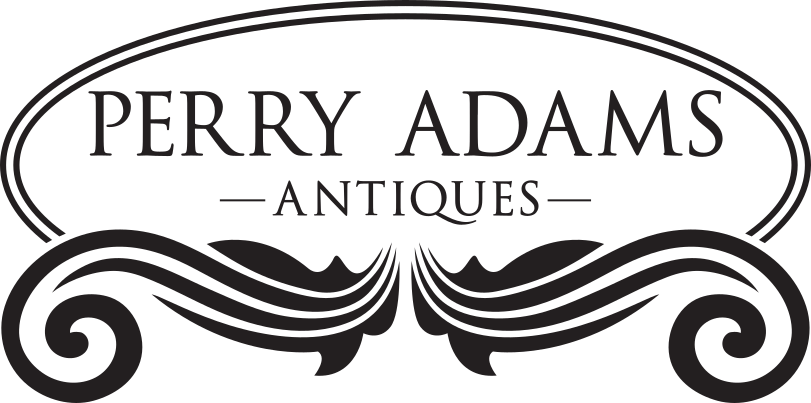Pre-Civil War Period Id’d Beaver Stovepipe Hat in its Original Box – Id’d to Brig. General George Williamson Balloch
SOLD
Pre-Civil War Period Id’d Beaver Stovepipe Hat in its Original Box – Id’d to Brig. General George Williamson Balloch – We have had numerous examples of war and pre-war period, beaver stovepipe hats, but rarely do we find a hat in its original, pasteboard box or identified to a specific individual. When we obtained the hat and box, a period piece of brown paper was in the hat; written on the paper, along with additional notations, is the following:
“Mr. Geo. W. Balloch
Cornish, N.H.”
George Williamson Balloch was employed as an agent of the Boston and Maine Railroad when the Civil War started, he enlisted in the Union Army in October 1861, and was commissioned as 1st Lieutenant of Company D, 5th New Hampshire Volunteer Infantry. On July 21, 1862 he was discharged from the 5th New Hampshire, and commissioned as a Captain in the Commissary of Subsistence Department, US Volunteers. Rising to Lieutenant Colonel, he would first serve as Chief Commissary of Subsistence on the staff of Major General Oliver O. Howard, then as Chief Commissary of Subsistence for the Union Army of the Cumberland’s XX Corps. Balloch was slightly wounded during the Battle of Gettysburg when a bullet grazed his ear; additionally, his sword was struck by a bullet, at Gettysburg, thereby preventing him from the ability to draw the sword from the scabbard. He was brevetted Brigadier General, US Volunteers on March 13, 1865 for “faithful and meritorious services during the war”. Balloch remained in the army until September 1, 1868, when he mustered out. After the war, he served in Civil Service positions in Washington, DC, and as a director of the 2nd National Bank. This hat appears to date to the 1850s, during the time Balloch served as a railroad agent, prior to the onset of the Civil War.
The hat remains in superior condition; the beaver fur covering the hat is in flawless shape. At the “base of the stovepipe” is a circumferential, black grosgrain silk ribbon, neatly tied in a diminutive, decorative bow. In profile, the hat has a noticeable concavity, which is typical of pre-Civil War, stovepipe hats. The interior of the hat is also flawless in condition – the interior retains its original, wide, reddish brown leather sweatband; the entire interior is lined in a bright red, wallpaper, with the interior crown lined with a decoratively embossed, red wallpaper, which displays the gold embossed maker’s name: “Renaud / Paris”. The hat box is in overall fair to good condition – it is constructed of decorative wallpapered pasteboard; the rim around the top of the box is somewhat weak and slightly separated in some areas, but could easily be stabilized. The interior of the box exhibits some age staining or foxing, but is sturdy and stable.
George Williamson Balloch
Residence Somersworth, NH; 35 years old.
Enlisted on 10/12/1861 as a 1st Lieut.
On 10/23/1861, he was commissioned into “D” Co. New Hampshire 5th Infantry.
He was discharged for promotion on 7/26/1862
On 7/21/1862, he was commissioned into US Volunteers Commissary Dept.
He was Mustered Out on 9/1/1868
Promotions:
- Capt 7/21/1862 (Captain & Commissary of Subsistence)
- Lt Colonel 5/13/1863 (Lt Colonel & Commissary)
- Colonel 3/13/1865 by Brevet
- Brig-General 3/13/1865 by Brevet
Born 12/3/1825 in Claremont, NH
Died 5/17/1907 in Washington, DC
Buried: Glenwood Cemetery, Washington, DC
Gravesite: Sec M; lot 2
After the war, he lived in Washington, DC
5th NH Infantry
Organized: Concord, NH on 10/12/1861
Mustered out: 6/28/1865
FIFTH REGIMENT NEW HAMPSHIRE VOLUNTEER INFANTRY. THREE YEARS. By WILLIAM CHILD, late Surgeon Fifth Regiment New Hampshire Volunteer Infantry, and Historian of Regiment. THE Fifth Regiment was organized at Concord, the men being enlisted for three years. Edward E. Cross of Lancaster was appointed colonel August 27, 1861, and at once entered upon the duties of the office. The regiment camped east of the Merrimack river, near the lower bridge, the camp being called “Camp Jackson.” Company A entered camp September 28, 1861, and the regimental organization was completed October 26. Colonel Cross was an experienced Indian fighter, and had been in the Mexican service, and his experience was valuable in organizing and disciplining the regiment. The renown gained by this organization is the heritage of no single locality, for its members were gathered from all parts of the State. The regiment received its colors October 28, 1861, and the next day left for the front, arriving at Bladensburg, Md., October 3I, when it was assigned to the First Brigade, Casey’s Division, Army of the Potomac. While at Bladensburg the regiment made a severe march to Lower Marlborough, to disperse armed bodies and prevent disturbance at the elections. The regiment was assigned to the First Brigade, Sumner’s Division, Army of the Potomac, November 27, 1861. It marched through Washington and Alexandria, Va., November 28, and the next day camped near Alexandria, the camp being called “Camp California,” where it remained until March 10, 1862. While here the regiment furnished men for scouting parties and picket duty, received instruction in engineering work, and was thoroughly drilled and disciplined. On the 10th of March, 1862, it left “Camp California,” and on the 14th was assigned to the First Brigade, Richardson’s Division, Second Army Corps. It participated in a reconnoissance to the Rappahannock river, March 28. On the 11th of April the regiment was at Ship Point, near Yorktown, Va., and April 25 was temporarily detached from its brigade to construct siege material for the siege of Yorktown, upon which duty it was engaged until May 4, when the enemy evacuated the city. May 28 and 29, under direction of Colonel Cross, and assisted by details from the Sixty-fourth New York Volunteers and the Irish Brigade, the Fifth built the noted “Grape-vine Bridge” across the Chickahominy river. The other bridges having been swept away by a freshet, Sedgwick’s Division crossed ” Grape-vine Bridge,” May 31,in time to check the advance of the Confederate army in its pursuit of the Federal troops, thus saving the Union army from a disastrous defeat. On the night of May 31, the Fifth took position on the field of Fair Oaks, and the next day forty of its members were killed or mortally wounded. Here the regiment remained, skirmishing and doing picket duty, until June 28. During the next three days it was engaged at Peach Orchard, Savage’s Station, White Oak Swamp, and Malvern Hill, after which it camped at Harrison’s Landing, Va., until August 16 the Band being mustered out on the 8th of August. At South Mountain the Fifth was in the reserve; but at Boonsborough, September 15, it was in the advance of the army, and two days later performed marked service at Antietam, losing in killed and wounded more than one third of those present. In the official reports, the Fifth is given the credit of having discovered and frustrated the attempt of the enemy to turn the left of the Second Corps. On the 2d of November the regiment skirmished at Snicker’s Gap, Va. It was assigned to the First Brigade, First Division, Second Army Corps, November 12, remaining in that brigade until July 27, 1863. On the 12th of December, 1862 the Fifth marched into Fredericksburg, and on the next day met with a fearful loss in its charge on Marye’s Heights. Six color bearers were shot down, and of nineteen officers present, eight were killed or mortally wounded, and five others wounded. The dead of the Fifth were among the few found near the stone wall, so noted in that battle. In his official report, General Hancock said: “Col. Edward E. Cross, commanding the Fifth New Hampshire Volunteers, severely wounded, behaved in the handsomest manner. The conduct of his regiment was heroic. Refusing to yield any ground, his brave officers and men died where they stood.” The winter of 1862-63 was spent in camp near Falmouth, Va. The regiment left camp April 28, 1863, and was at Chancellorsville from the 1st to the 5th of May. On the 7th of June a detail of about one hundred and thirty men formed a part of the picked force of infantry which accompanied the cavalry of the army, and acted as its support in the fight at Beverly Ford and Brandy Station, Va., June 9. The detail joined the regiment June I7, at Sangster’s Station. On the 2d and 3d of July the Fifth lost heavily at Gettysburg, Pa. Colonel Cross, who was commanding a brigade, was mortally wounded on the 2d of July, and died that night at 12.30 o’clock. About the 1st of August the regiment was ordered home to recruit, arriving at Concord August 3. Returning to the front, the regiment landed at Point Lookout, Md., November 14, where it remained until May 27, 1864, guarding rebel risoners. On the 1st of June, 1864, the regiment joined the army near Cold Harbor, and was assigned to the First Brigade, First Division, Second Army Corps. On the 3d of June, at Cold Harbor, it maintained its old fame, losing on that day forty- six killed or mortally wounded. Here the regiment charged, entering the rebel works, but was compelled to fall back the troops on its flanks having failed to break through the rebel lines. The Fifth remained in the works at Cold Harbor until June I2, suffering constantly from the enemy’s fire. On the 16th of June the regiment charged on the enemy’s works at Petersburg, and was engaged in front of Petersburg until July 26, being in the Jerusalem Plank Road fight June 22. The James river was crossed July 26, and the regiment was engaged at Deep Bottom the next day, being mentioned in orders by General Hancock for its “gallantry in the capture of the enemy’s battery.” The regiment re-crossed the James July 29, and on the 30th arrived in front of Petersburg, participating in the siege until August 12, when another march was made across the James; on the 16th it was engaged at Deep Bottom; and on the 25th, at Ream’s Station. Arriving at the old camp-ground in front of Petersburg, August 27, the regiment was engaged in the siege until the city was evacuated. On the 15th of October the regiment was placed in Fort Stedman, remaining there until about November 15, when it was relieved and moved to the rear. In November, the regiment having been reduced below the minimum number necessary for a regiment, by the discharge of the original members, whose time expired October 26, became an eight company battalion, the members of Companies D and K being transferred to the other companies. About the 1st of December, the Fifth was placed in Fort Welch, and on the 8th and 9th of December took part in the reconnoissance to Hatcher’s Run, Va. Returning to Fort Welch, it remained there until February 5, 1865. Companies F and G, Second United States Sharpshooters, were transferred to the Fifth, January 30, 1865. During the remainder of February the headquarters of the corps was near the Wilkinson house. A slight loss was sustained at Fort Stedman March 25. During March most of the time was devoted to preparation for the final struggle. During the last of March the Army of the Potomac began the operations which culminated in the surrender of Lee’s army. In these operations the Fifth took an active part, being engaged at Dinwiddie Court House, Va., March 31, and at Sailor’s Creek, Va., April 6. At Farmville, Va., April 7, the Fifth made its last charge. The enemy was strongly posted, and the ranks of the Fifth withered away until when it reached the last slope within a few feet of the enemy’s works, the colors, supported by only a handful of men, were captured by the enemy, who dashed out in overwhelming numbers, and but few of those near the colors escaped death or capture. On the next day the colors and the prisoners lost with them were re-captured. On the 9th, Lee’s army surrendered. On the 23d of May the Fifth marched in the grand review of the Union army at Washington, and on the 28th of June was mustered out near Alexandria, Va. The regiment was ever under excellent discipline, and was thoroughly prepared for any duty it might be called upon to perform. Hardly any writer, in describing the great battles of the Army of the Potomac, fails to mention the Fifth New Hampshire Infantry and the important services it rendered. The following is from ” Regimental Losses in the American Civil War, 1861-65,” by William F. Fox, Lt. Col. U. S. Vols.: ” The one regiment in all the Union armies which sustained the greatest loss in battle during the American Civil War was the Fifth New Hampshire Infantry. * * * It served in the First Division, Second Corps. This division was commanded successively by Generals Richardson, Hancock, Caldwell, Barlow, and Miles; and any regiment that followed the fortunes of these men was sure to kind plenty of bloody work cut out for it. The losses of the Fifth New Hampshire occurred entirely in aggressive, hard, stand-up fighting; none of it happened in routs or through blunders. Its loss includes eighteen officers killed, a number far in excess of the usual proportion, and indicates that the men were bravely led. Its percentage of killed is also very large, especially as based on the original enrollment. The exact percentage of the total enrollment cannot be definitely ascertained, as the rolls were loaded down in 1864 with the names of a large number of conscripts and bounty men who never joined the regiment. * * * Known to the corps and division commanders as a reliable regiment, it was the more often called upon to face the enemy’s fire, or assigned to the post of danger.” The Fifth New Hampshire Volunteers was attached to First Brigade, Casey’s Division, Army of the Potomac, October 31, I86I; First Brigade, Sumner’s Division, Army of the Potomac, November 27, I86I; First Brigade Richardson’s Division (became Hancock’s Division September 17, 1862), Second Army Clorps’ March 14′ 1862; First Brigade, First Division, Second Army Corps, November 12,1862, to July 27, 1863; at Concord, August 3,1863; in District of St. Mary’s, Department of Virginia and North Carolina, November 13, 1863; First Brigade, First Division, Second Army Corps, June 1, 1864. ENGAGEMENTS . Rappahannock River, Va. Mar. 28, 1862 Yorktown, Va. Apr. 25 to May 4, 1862 Fair Oaks, Va. June 1, 1862 Peach Orchard, Va. June 29, 1862 Savage’s Station, Va. June 29, 1862 White Oak Swamp, (Glendale or Charles City Cross Roads), Va. June 30, 1862 Malvern Hill, Va. July 1, 1862 Boonsborough, Md. Sept. 15, 1862 Antietam, Md. Sept 17, 1862 Snicker’s Gap, Va. Nov. 2, 1862 Fredericksburg, Va. Dec. 13, 1862 Chancellorsville, Va. May 1- 5, 1863 Gettysburg, Pa. July 2, 3, 1863 Cold Harbor, Va. June 2-I2, I864 Siege of Petersburg, Va., June 16 to July 26; July 30 to Aug. 12 Aug. 21 to Dec. 7,1864;Dec. 10, 1864, to April 2, 1865. Jerusalem Plank Road, Va. June 22, 1864 Deep Bottom, Va. July 27, Aug. 16, 1864 Ream’s Station, Va. Aug. 25, 1864 Reconnoissance to Hatcher’s Run, Va. Mar. 25, 1865 Ft. Stedman, Va. Mar. 25, 1865 Dinwiddie Court House, Va. Mar. 31, 1865 Sailor’s Creek, Va. Apr. 6, 1865 Farmville, Va. Apr. 7, 1865
Handwritten autobiographical sketch of George Williamson Balloch:
https://cdm16663.contentdm.oclc.org/digital/collection/p16663coll4/id/31074
From the collection related to George Williamson Balloch housed at Norwich University where Balloch had been a student:
Summary Creator Balloch, George Williamson,b.1825 – Title George Williamson Balloch Papers Dates1845-1902 About the Collection: The collection is rich in biographical detail about the life and military service of George W. Balloch. There is a notebook kept by Balloch as a student at Norwich University, 1845-1847, including essays and poetry, some of which is original and some of which was copied by Balloch from various published sources. This notebook is more compositional than autobiographical. Also included in the collection are three items of correspondence dated 1865 and 1868. Balloch’s lecture, “How an Army is Fed,” delivered to the Soldier’s Union of the First Congregational Church, Washington, DC, on 21 October 1898, along with a draft of the same, is also included, as is his tribute to President Benjamin Harrison (1833-1901), “General Harrison as a Soldier,” delivered to the same organization on 18 March 1901. There are three variant autobiographical sketches written by George Balloch in July of 1902 as well as his memoirs, which include another autobiographical account of his life from his birth in 1825 to the Battle of Seven Pines in 1862. The latter memoirs were written after 1900 and consist of a single manuscript volume and typed transcription. Items from this collection available digitally. Most of the documents in this collection are digitized. All other records within the collection are only available by visiting us onsite or contacting archives staff to discuss the possibility of remote access options for specific documents.
George W. Balloch (1825-1907) was born in Claremont, NH. During the Civil War, he served with the Fifth New Hampshire Volunteers Infantry Regiment, which was assigned to General Oliver Otis Howard’s brigade, thus beginning a connection with General Howard that would last throughout and beyond the Civil War. Balloch served as commissary of subsistence under O. O. Howard for most of the war. Following the war, George W. Balloch served as chief disbursing officer of the newly-created Freedmen’s Bureau until 1871. Later, he worked in both the banking and insurance businesses. He married Martha Jane Palmer (d. 1900) in 1849 and the couple had eight children. The collection contains additional biographical information on the life and career of George Williamson The collection is open. Many items in the University Archives are one-of-a-kind resources that are not likely to be available anywhere but here. For this reason, forming citations for archival sources is a little different than for books and periodicals. If you need to cite anything from this collection, follow the format below: Identification of specific item; Date (if known); George Williamson Balloch Papers, Box and/or Folder and/or Item Identification; Norwich University Archives, Kreitzberg Library, Northfield, VT. Here’s an example from the collection: Letter to Mrs. James R. Balloch from George W. Balloch, 3 July 1868. George Williamson Balloch Papers, Correspondence file, Norwich University Archives, Kreitzberg Library, Northfield, VT.



